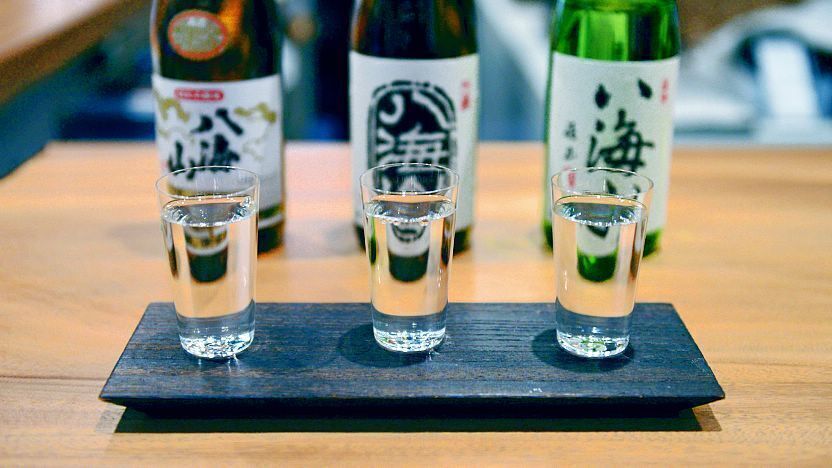norman.comfort@getcomfortable.co.uk, or talk to me on 07530 708125. Let's do this.....
Exploring the World of Sake: A Journey Through My WSET Level 1 Sake Qualification
Sake, Japan’s iconic rice wine, is something I have been fascinated by for some time. The complexity of the fermentation process, the labels, the origin all excited me. Once a niche beverage mainly found in Japanese restaurants, sake is becoming increasingly popular and recognized among consumers and wine enthusiasts. The WSET Sake qualifications illustrate how interest in understanding its rich history, intricate brewing process, and diverse flavour profiles of Sake is growing.
Sake’s Rising Popularity in the UK
Traditionally, sake has been somewhat misunderstood in Western markets, often misidentified as a strong spirit rather than the brewed beverage it truly is. As more people become interested in global cuisines and unique drinking experiences, Sake has found its place in the spotlight.
Several factors have contributed to this. Firstly, the increase in high-quality Japanese restaurants and sushi bars across the UK has introduced many people to sake, offering them a firsthand experience of its diverse styles and flavours. Secondly, sake’s versatility as a drink—it can be enjoyed warm or chilled, paired with a wide range of foods—makes it an appealing choice for those looking to try something new.
Younger consumers have embraced sake as a sophisticated and versatile beverage. Wine shops, bars, and even pubs are beginning to stock a wider range of sakes, while sommeliers and mixologists are more frequently including sake on their menus. This shift is part of a broader trend towards exploring and celebrating lesser-known, artisanal drinks that have a rich cultural heritage.
The WSET Level 1 Sake Qualification: An Overview
The WSET (Wine & Spirit Education Trust) is a globally recognized institution that provides education and qualifications in wines, spirits, and sake. Their Level 1 Sake qualification is designed for beginners looking to gain a solid foundation in sake. It covers the basics of how sake is made, the different types of sake, and how to taste and pair it with food.
The course I attended at the London Wine School in Bermondsey was both comprehensive and engaging. It was structured as a one-day workshop, with a mix of theoretical lessons and practical tasting sessions.
Here’s a brief overview of what I learned during the course:
History and Culture of Sake: We began by exploring the rich history of sake and its cultural significance in Japan. From its origins over a thousand years ago to its role in religious ceremonies and modern-day celebrations, sake is deeply embedded in Japanese culture. Understanding this history provided a meaningful context for appreciating sake not just as a beverage, but as a cultural artifact.
Ingredients and Production Process: A significant portion of the course was dedicated to understanding how sake is made. Unlike grape wine, which is made by fermenting fruit, sake is brewed from rice, water, yeast, and koji mold. The process is more akin to brewing beer than winemaking, involving multiple stages of fermentation. We learned about the importance of rice polishing, fermentation techniques, and the role of koji in converting starches into fermentable sugars, which are crucial for creating the distinct flavors of sake.
Types and Styles of Sake: The course also delved into the various types of sake, such as Junmai, Ginjo, and Daiginjo, each with its own characteristics and flavour profiles. We learned how the level of rice polishing, brewing methods, and added ingredients can influence the taste, aroma, and texture of sake. This section was particularly enlightening, as it highlighted the vast diversity within the sake category, much like wine or craft beer.
Sake has a classification system based on ingredients, brewing methods, and polishing ratios of the rice used. Here’s an overview of the classification system and key terminology associated with sake:
**Rice Polishing Ratio (Seimai-buai)**
The rice polishing ratio is crucial in sake classification. It refers to the percentage of the rice grain that remains after polishing. The more the rice is polished, the more refined and delicate the sake tends to be. The polishing process removes the outer layers of the rice grain, which contain proteins and fats that can negatively affect the flavor of the sake.
Seimai-buai: The rice polishing ratio. For example, a seimai-buai of 70% means that 30% of the rice has been polished away.
Sake Classifications
Junmai sakes must have a rice polishing ratio of 70% or lower, although many are polished more than this. The flavor of junmai sake tends to be fuller-bodied and richer, with more umami.
Honjozo is a sake that has a small amount of distilled alcohol added. The rice polishing ratio must be 70% or less. The added alcohol can help to extract more flavor and aroma compounds from the rice. Honjozo sake typically has a lighter, more fragrant profile compared to junmai.
Ginjo sake requires a rice polishing ratio of 60% or less. It can be either junmai ginjo (without added alcohol) or simply ginjo (with a small amount of added alcohol). Ginjo sakes are known for their fruity and floral aromas, and a lighter, more refined taste.
Daiginjo is a premium sake with a rice polishing ratio of 50% or less. It can also be either junmai daiginjo (no added alcohol) or daiginjo (with added alcohol). Daiginjo sakes are highly polished, which usually results in a delicate, complex flavor and aroma.
Other Important Terminology
Koji refers to the mold *Aspergillus oryzae*, which is used to convert starches in the rice into fermentable sugars during the sake brewing process. Koji is crucial for sake production as it starts the fermentation process and greatly influences the flavour profile.
Moto is the yeast starter used in sake brewing.
It is a mixture of steamed rice, koji, water, and yeast that ferments for several weeks, creating a robust yeast culture necessary for alcohol production.
Moromi is the main mash of sake, where fermentation takes place. After the yeast starter is prepared, it is added to the moromi along with additional steamed rice, koji, and water over several stages.
Tokutei meishoshu refers to “special designation sake” categories that include junmai, honjozo, ginjo, and daiginjo. These classifications are regulated by Japanese law to maintain quality standards.
Namazake: unpasteurized sake. Most sake is pasteurized twice to stabilize it, but namazake skips this step, resulting in a fresher, livelier taste that requires refrigeration.
Nigori: sake is a type of sake that is coarsely filtered, leaving some of the rice solids in the liquid. This results in a cloudy appearance and often a sweeter, richer taste.
Kimoto and Yamahai: Traditional methods of making the yeast starter (moto) which involve natural lactic acid production. These methods usually result in a richer, more pronounced flavour profile.
Reishu: Chilled sake.
Jouon: Sake served at room temperature.
Atsukan: Warmed sake.
Understanding these terms and classifications can greatly enhance one’s appreciation and knowledge of sake. Whether you prefer a full-bodied junmai or a delicate daiginjo, there’s a wide world of sake to explore!
Sake Tasting and Pairing: Perhaps the most enjoyable part of the course was the tasting session. We sampled a range of sakes, from light and floral to rich and full-bodied throughout the day. We practiced the WSET’s systematic approach to tasting, which involves examining the appearance, nose, and palate of each sake. This structured method helped us to identify and articulate the different aromas, flavors, and textures we encountered. We also discussed how to pair sake with food, learning that sake’s umami-rich profile makes it an excellent companion for a variety of dishes, not just Japanese cuisine.
Storage and Service: The course concluded with a focus on the best practices for storing and serving sake. We learned that, unlike wine, most sake is best enjoyed fresh and should be consumed within a year of production. Proper storage and serving temperature can significantly enhance the tasting experience, ensuring that the flavours and aromas are at their best.
My Experience and Takeaways
Completing the WSET Level 1 Sake qualification was an incredibly rewarding experience. Not only did I gain a deeper understanding of sake, but I also developed a greater appreciation for the artistry and dedication that goes into its production. The course provided me with the knowledge and confidence to explore sake further, whether through tasting, pairing, or sharing my newfound insights with others.
Sake’s growing recognition in the UK is an exciting development, and I’m thrilled to be part of this movement. As more people become aware of sake’s unique qualities and rich history, I believe it will continue to gain popularity and become a staple on wine lists and in home bars across the country.
If you’re curious about sake and want to expand your knowledge, I highly recommend the WSET Level 1 Sake course. It’s a fantastic introduction to a world that is both ancient and ever-evolving, and it might just inspire you to start your own sake journey. Cheers to discovering the wonders of sake!

